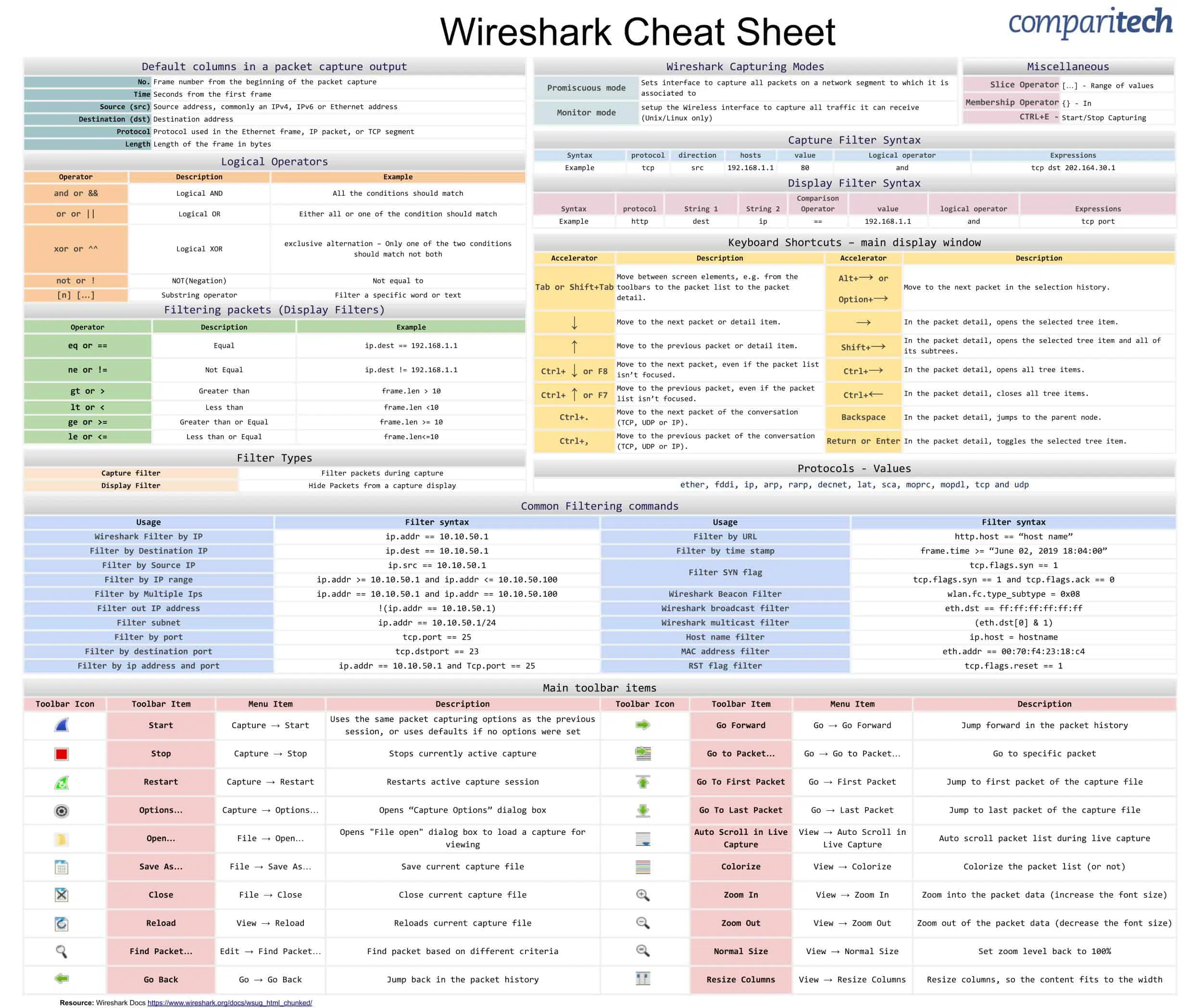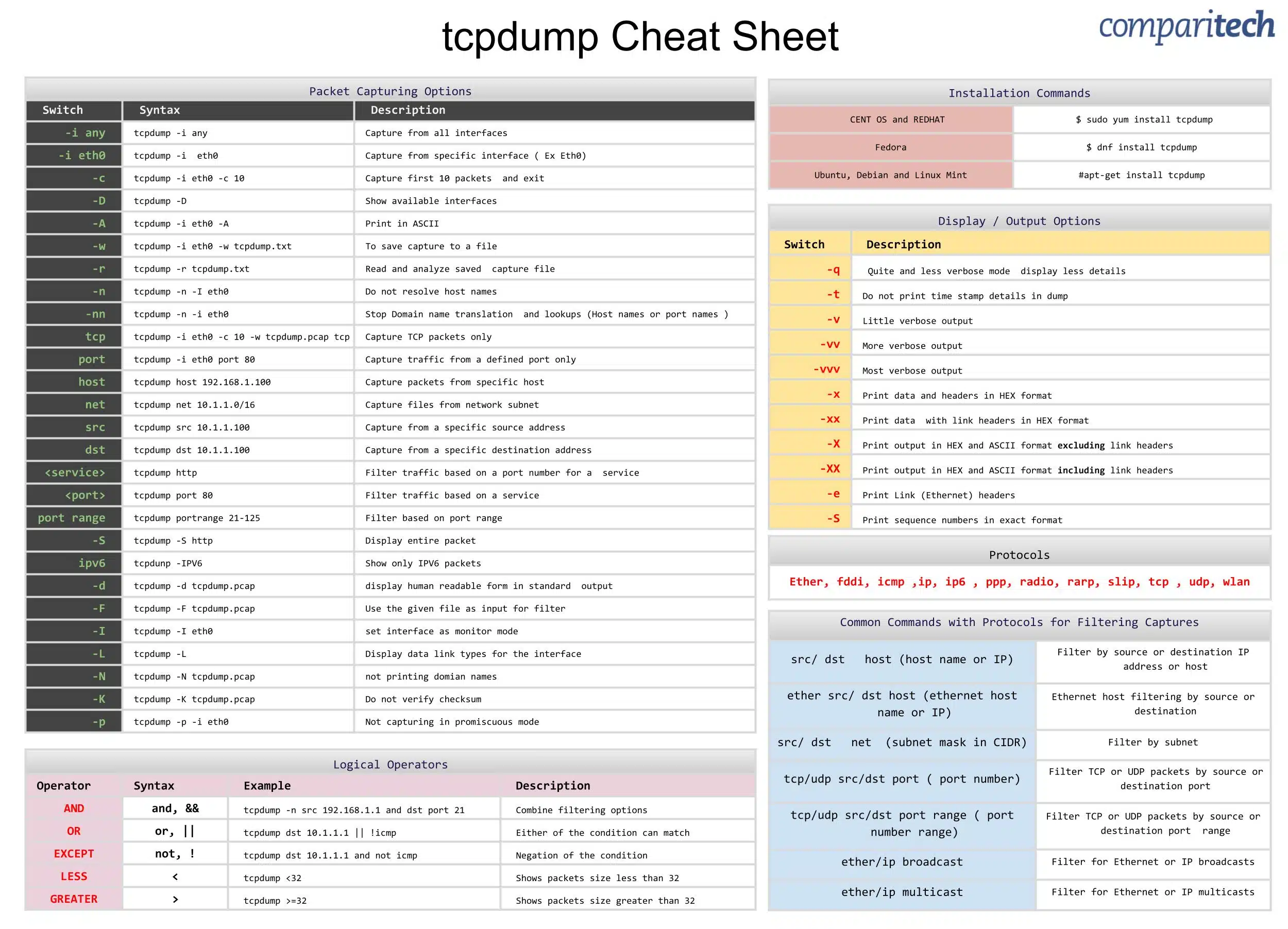IETF - https://www.ietf.org/standards/
IANA - https://www.iana.org/
IEEE - https://www.ieee.org/
- Header
- contain formation about the type of data being passed
- Data
- The payload being trasmitted which may include higher level protocols
- Footer/Trailer
- may holds error-checking but not always required depending on protocol
The most basic layer which is measured by bits over a network
The layer where two host are trying to communicate inbetween
- MAC
- Act as a sublayer governing protocol access to the physical medium, physical addressing, and acts as an interface between the LLC and physical layer
- Logical Link Control
- Manages communication between devices over a single link of the network that includes error checking and data flow
the most common layer 2 protocol
Protocal to link IP addresses to MAC addresses
The layer responsable for the Internet
- When The payload is too large it may be fragmented
Enables layer 3 networking with out configuation and administration
responsible for error free data transfer
maintains the state of ongoing connections
initaiates coonections through a proxy
obsolete method to create VPN tunnels
allows for Tunneling without native encryption
establish connections for share files, printers, extra
requests for a response protocol
deals with the Translating, Formatting, Encryption, and Compression of data
Libpcap -- pull all traffic from the nic, must have elevated privilege C/C++ portable used on with Wireshark and TCPDump, installed on Linux by default


Bitwise Masking -- filters down to the bit
- Switches contain a CAM table which holds mac addr, vlan and port information
- Spanning Tree protocol prevents endless frames circualtion by setting a root
- The Dynamic Trunking Protocol (DTP) is a Cisco proprietary Layer 2 protocol. Its purpose is to dynamically negotiate trunking on a link between two switches running VLANS. It can also negotiate the type of trunking protocol to be used on the link (802.1q or ISL). DTP works by exchanging small DTP frames between two supporting devices to negotiate the link parameters.
- Cisco Discovery Protocol (CDP) is a Layer 2, Cisco proprietary protocol used to share information with other directly connected Cisco devices. CDP is protocol and media independent and runs on all Cisco routers, switches, and other devices.
- The table includes routes to what it determines is the "best route" to the destination network. When a packet enters a router it will be decapsulated

- Best Route = Longest Match




Interior Gateway Protocols (IGP): Routing protocols that are used within an AS. Referred to as intra-AS routing. Organizations and service providers IGPs on their internal networks. IGPs include RIP, EIGRP, OSPF, and IS-IS.
Exterior Gateway Protocols (EGP): Used primarily for routing between autonomous systems. Referred to as inter-AS routing. Service providers and large companies will interconnect their AS using an EGP. The Border Gateway Protocol (BGP) is the only currently viable EGP and is the official routing protocol used by the Internet.


















